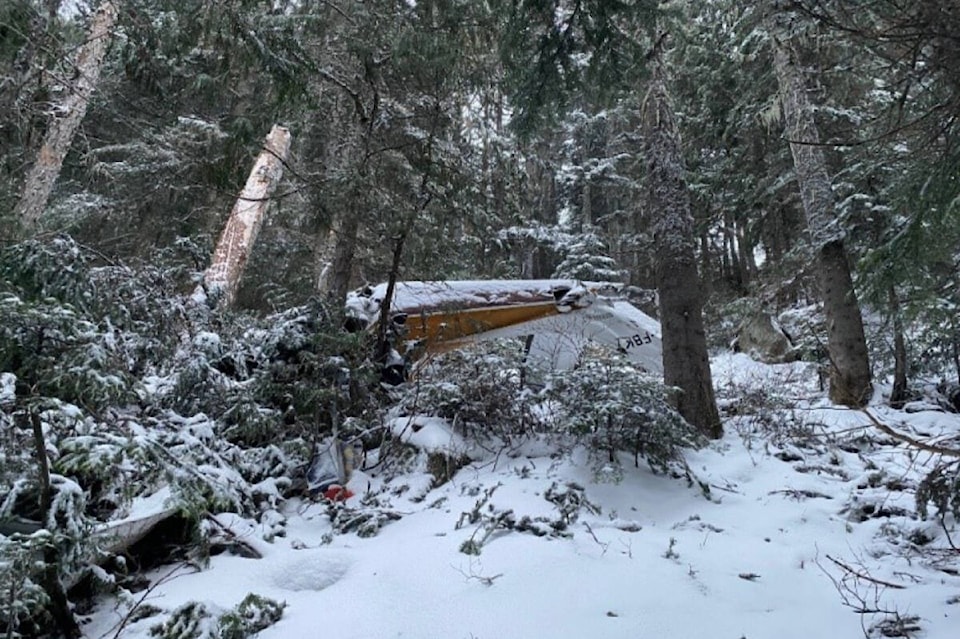Improper oxygen supply was a factor in a plane crash that killed two people near Hope last November, the Transportation Safety Board of Canada has found.
A pilot and passenger died when the Cessna R182, destined from Nanaimo to Montana, crashed near Hope Airport and Needle Peak. The crash site was discovered early Nov. 16 and the plane was destroyed on impact, noted a report released today, Oct. 27.
The aircraft was discovered upside-down on a forested slope, with damage suggesting the plane collided with trees in “a steep nose-down attitude,” noted the report. The wings and engine had detached from the main fuselage and the plane crashed about 12 metres from where it first hit the trees, with the impact signifying “loss of control.” A forecast for the crash area at the time said a cold front would be aloft, moving northeast.
“The aircraft was not equipped for flight in instrument meteorological conditions or in known icing conditions, and there was no supplemental oxygen system on board,” the report stated.
The plane was unpressurized and according to the report, flying unpressurized planes at high altitudes without the use of oxygen can lead to hypoxia, with symptoms including shortness of breath, confusion and rapid heart rate.
Canadian aviation regulations dictate unpressurized aircraft must have a supply of oxygen available.
Investigators were unable to ascertain any weather information the pilot gathered prior to departure and there was no record that they had received a weather briefing from Nav Canada.
The Cessna departed Nanaimo Airport the afternoon of Nov. 15. At 3:30 p.m. it “began a sequence of climbs, descents and heading changes that lasted several minutes,” the report said. The aircraft had been travelling at least 10,000 feet above sea level for 47 minutes “when it a entered descending spiral pattern from which it did not recover.”
The last recorded radar target was at 3:41 p.m., when the plane was at an altitude of about 8,700 feet heading toward Needle Peak, said the report.
The pilot held a private pilot licence and had 116 hours of total flying time.
“The aircraft was flying in an area of forecast icing and instrument meteorological conditions at altitudes requiring the use of supplemental oxygen; however, the pilot did not hold an instrument rating, the aircraft was not equipped for flight in known icing conditions, and no supplemental oxygen system was on board,” said investigators.
It is important that pilots assess all weather information before taking flight and plan routes accordingly. Pilots must operate within limits of their plane, the report concluded.
READ ALSO: Probe finds potential cause of Puget Sound plane crash that killed 10
reporter@nanaimobulletin.com
Like us on Facebook and follow us on Twitter
